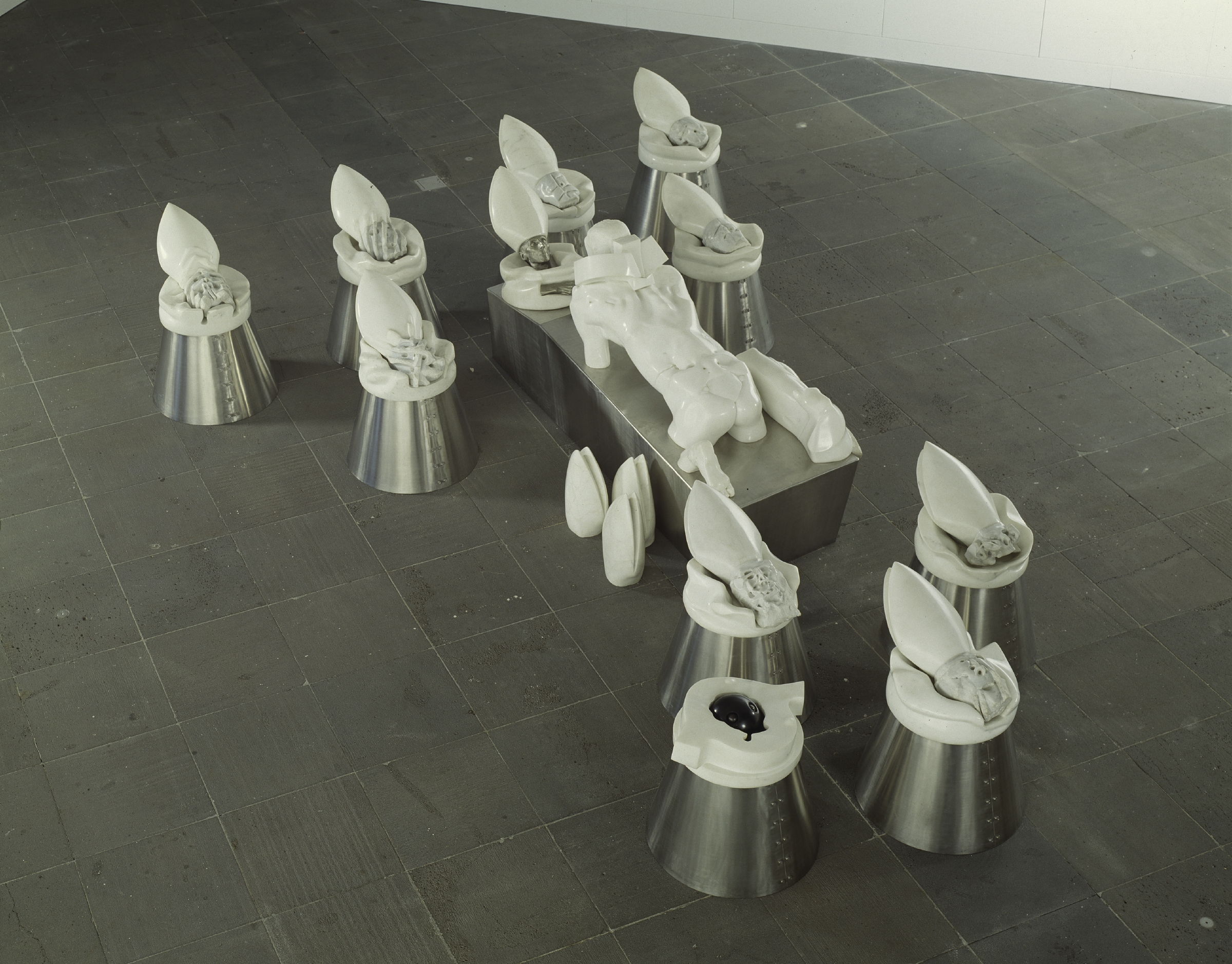Jean Ipoustéguy’s Death of the Father
NGV International
Ground Level
24 Oct – 20 Nov 72
In October 1972, the NGV acquired one of its most controversial (and expensive) sculptures, Jean Ipoustéguy’s Death of the Father (La Mort du père), which was exhibited alone under dramatic lighting in a dedicated temporary exhibition space. NGV Senior Curator, International Art, Ted Gott describes the work as a ‘six-metre-long, multi-part marble, bronze and stainless-steel installation arranged to resemble the floorplan of a basilica. It presented a narrative of the physical decay of a clerically allegorised father figure, witnessed by the crouching form of a sculptor-son whose erect phallus manifests a tumescent sexual life force’. The artist first conceived it as ‘Death of the Pope’, but later inserted the features of his own father, who died in 1967.
It’s arrival in Melbourne and subsequent moral outrage – mostly directed at the erotic content of the work and the papal hats worn by some of the figures – coincided with the lead-up to Australia hosting the 40th International Eucharistic Congress in 1973, which as the New York Times reported, brought to Melbourne ‘17 cardinals, five cardinals select, and hundreds of archbishops and lower-ranking clergy’, not to mention Mother Theresa.
Death of the Father also inspired protests from Melbourne’s artistic community, perhaps at the cost of the work – during its display, a group calling themselves the Melbourne Revolutionary Surrealist Society left an enormous papier-mâché sculpture titled ‘Death of Capitalism’ at the NGV entrance at dawn. A brick, petrol can and some grass were also placed next to the statue.
Displayed most recently during the 2020 NGV Triennial, Death of the Father never ceases to stop visitors in their tracks.
